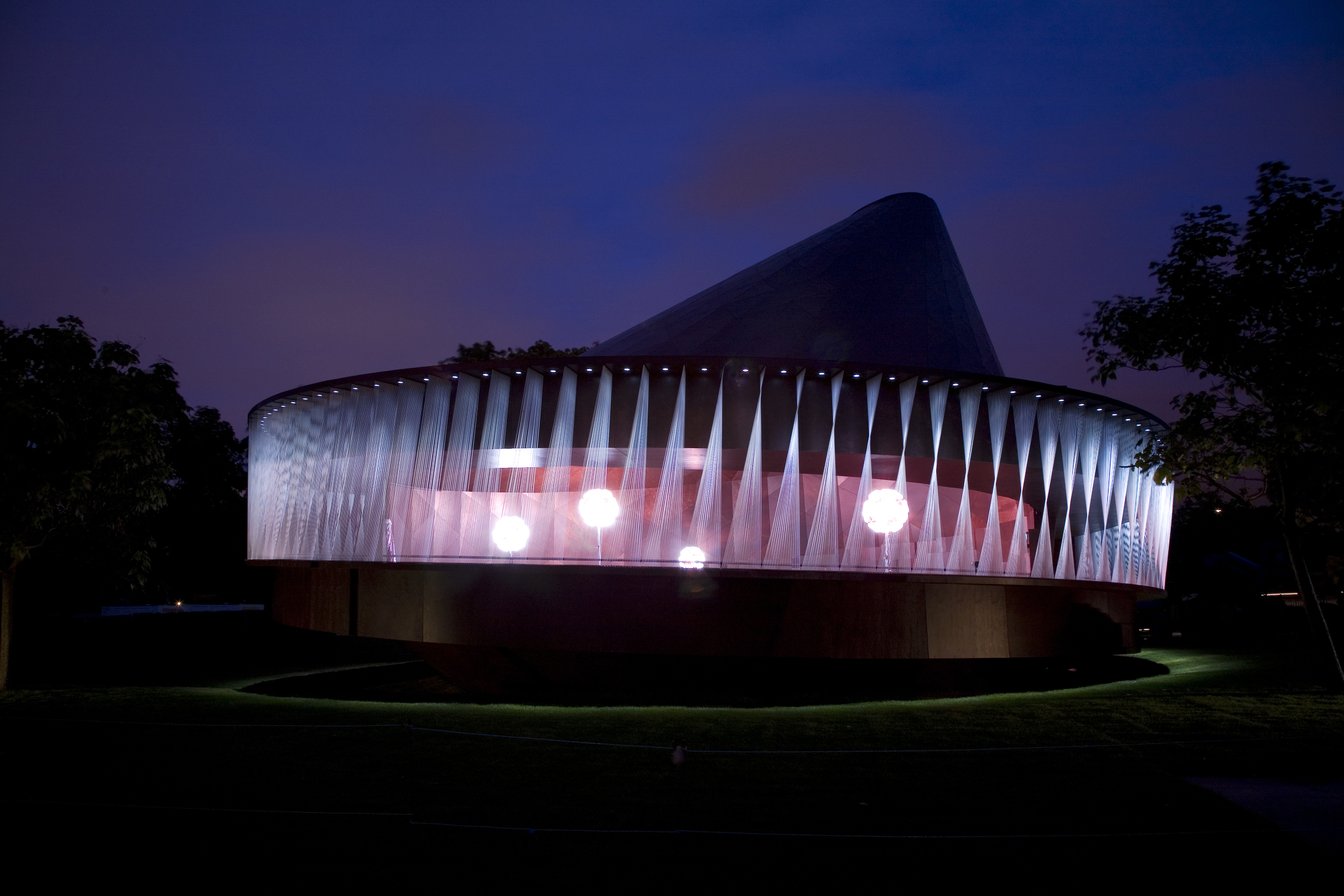With the art world press excited by transparency in festival sponsorship - particularly in the wake of the sponsorship controversy at the 19th Biennale of Sydney - why did the museum try to conceal the artist’s identity?
I arrived at MONA on Saturday afternoon after a busy morning between all the DARK MOFO events, and did not anticipate the tempo to slow upon entering their largest exhibition space – the museum itself. After walking across the already unassuming entrance via a tennis court, I stood confused. What was formerly the cloakroom and ticket desk is now a Tasmanian Tourist information Centre - complete with brochures for Bruny Island Adventure cruises and a rack of cotton Tasmania T-shirts.
Entering, iPod in hand, I looked up to a billboard usually reserved as museum map and am given directions to Max Brenner, a nightclub, and a Victoria’s Secret store. A sign reads ‘Southdale Shopping Centre Coming Soon’ attached to a stand giving away free oranges. It is well known that the museum was privately built and is generously funded entirely by David Walsh. I overhear a few visitors wondering whether the museum might be in need of support through these big-name sponsors.
After passing underneath a series of large banners advertising L’Oreal to Hugo Boss, I reach the entrance of a community centre ‘C’MONA’ that has been dropped into the hunkered down museum space. Beside C’MONA sits a dreary office set-up complete with photocopy machine, fake plants, brown noticeboard pinned and staff roster. Inside the centre is a suicide prevention information area, children’s playground, and a fully functioning St Vincent de Paul charity shop. The staff member is telling visitors that everything is for sale and encourages us to have a look around. I buy a postcard for 20 cents. There are two young girls sifting through the racks of vintage dresses and I start to wonder who is in on this.
On a white board there is a handwritten message stating ‘Today: Free workshop, Slab Clay tile making from 10am – 2pm.’ I join an elderly couple that are already half way through their designs. The man has carved a wonky star in the wet clay and asks me to pass him the rolling pin to fix his mistake.
With all the real paraphernalia, signage, extreme attention to detail, and tight lipped staff, visitors seem to forget they are in an art museum and begin to participate without thought. I talk to a Vinnies staffer about it. “It's been a really interesting experience for us watching people come in and act like they are in the shop” he says.
I take a break and sit on the sofa upstairs next to a day care centre nook. There is the familiar green Starbucks logo on the cafe wall. “Is it an actual Starbucks?” a teenager asks his companion, “there is only one drink size here… Starbucks normally has more than one size...” The conversation peters off and they don’t give it any more thought.
The key to all this seems to lie within the pages of a publication titled ‘Land of David’ that is for sale outside the bookstore. What purports to be a biography of David Walsh is filled with an assortment of texts beginning with an essay on the Southdale Shopping Centre that was designed by Victor Gruen in 1956. It was the first enclosed shopping mall in the United States, intended to be a fully fledged community. Gruen also coined the term the ‘Gruen transfer’ referencing the dazed wandering that supermarkets can stimulate. In a similar project, the artist transformed the former site of his gallery Hauser and Wirth in London’s Piccadilly from May 13 – July 30, 2011 where he installed a working community centre complete with counselling rooms and a charity shop
Büchel, like Walsh, is interested in pushing boundaries and challenging the role of the art museum and by absenting himself the point is strengthened. While working together the pair have encountered an ideological clash, made public yesterday.
While the venture is incredibly risky, potentially even hindering visitor numbers, MONA’s commitment to challenging art projects that continue to break museological rules should be applauded.
C'MONA, Museum of Old and New Art, June - November 2014.
This story was first published on ARTAND Australia's website.

















































































































